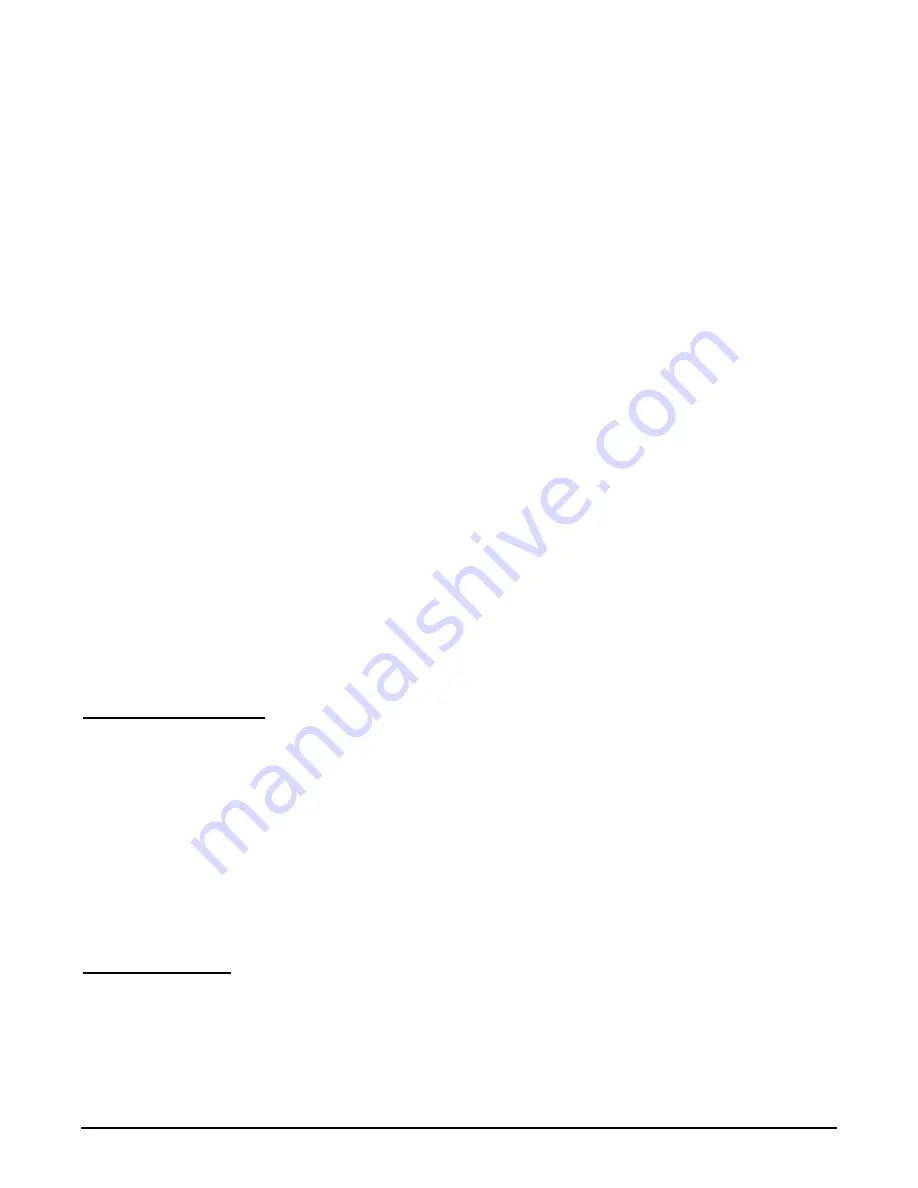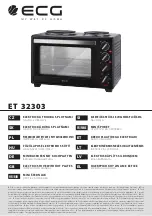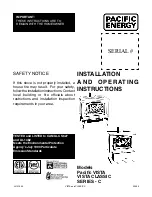
GENERAL INSTALLATION NOTES
1.
The chimney is intended for use with residential, commercial and industrial heating appliances, and for fire-
places where permitted by the local building codes. See page 3 for maximum allowable flue gas tempera-
tures.
2.
Size the chimney in accordance with the appliance manufacturer’s instructions. For masonry fireplaces follow
TABLE 1. When extending a masonry chimney the cross sectional area of the RIS chimney must equal or
slightly exceed the cross sectional area of the existing chimney. Note: In the chart on page 4 the chimney size
is a function of fireplace opening size, it is possible to change the chimney diameter required by increasing or
reducing the opening size.
3.
The chimney may be enclosed in a combustible chase. If it is desirable to enclose the chimney, then maintain
at least 2" clearance to combustibles. We recommend that the chase be lined with gyprock. Some areas
require type X gyprock, see local authorities for the regulations in your area.
4.
Do not fill the space around the chimney with insulation or any other material. This space must remain empty.
5.
The chimney shall extend at least 3 ft. above its point of contact with the roof and at least 2 ft. higher than any
wall, roof or adjacent building within 10 ft. The chimney must project a minimum of 8" above a locally fabri-
cated metal chase flashing. Note: In California this chase flashing is required to be ventilated.
6.
The maximum height of un-braced or un-guyed chimney above the roof is 5 ft.
7.
The clearance between single wall stove pipe and unprotected combustible material must not be less than 18"
(refer to the Building Code in use in your area).
8.
Factory built chimneys which extend through any story above that on which the connected appliance is
located are to be provided with enclosures having a fire rating equal to or greater than that of the floor or roof
assembly through which they pass.
9.
A support must be installed above each chimney offset. See table 4 for load ratings.
10. We recommend that an existing masonry chimney be inspected and cleaned by a qualified chiney sweep prior
to commencing the installation of a chimney extension or chimney lining.
CHIMNEY CLEANING
Keep your chimney clean. Access should be provided for the inspection and cleaning of all sections of the chim-
ney. Have your chimney cleaned by a qualified chimney sweep. If you want to clean your chimney yourself, then
clean your chimney using a nylon or metal chimney brush of the CORRECT SIZE. DO NOT use a brush that will
scratch the stainless steel interior of the chimney.
Soot Formation and Need for Removal (oil appliance):
Soot can accumulate on the chimney flue when connected to an oil fired appliance. If not removed periodically this
deposit can ignite and cause possible damage to the chimney. The chimney should be inspected at least once
every year during the heating season to determine if a soot build up has occurred. If soot has accumulated, it
should be removed to reduce the risk of chimney fire.
CHIMNEY SIZING
Use the table on page 6 to determine the correct diameter of chimney for an open masonry fireplace. For facto-
ry-built fireplaces and wood-burning stoves, use the size specified by the appliance manufacturer. In most cases,
this is the diameter of the flue collar.
RIS Owner's Manual
ICC Chimney
5






































